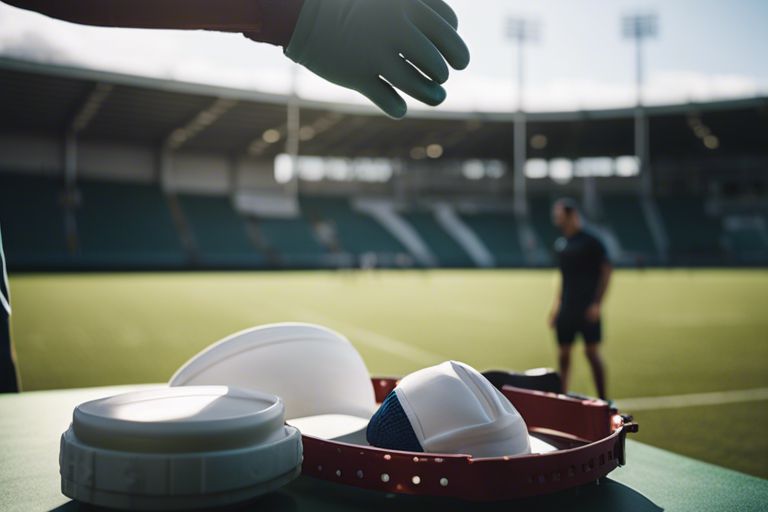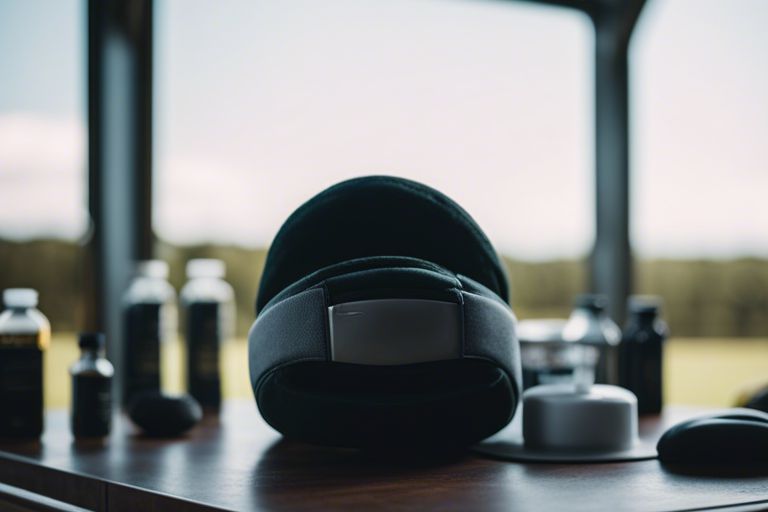Rugby head gear is an vital piece of equipment that requires proper care to ensure longevity and effectiveness on the field. Cleaning and maintaining your rugby head gear not only extends its lifespan but also keeps it hygienic for your safety. In this guide, we will provide you with step-by-step instructions on how to properly clean and maintain your rugby head gear, so you can stay protected and focused during every game.
Key Takeaways:
- Regular cleaning of your rugby head gear is necessary in preventing the buildup of bacteria and unpleasant odors.
- Follow manufacturer’s instructions on how to properly clean and maintain your head gear to ensure longevity and effectiveness.
- Air dry your head gear after cleaning to avoid any damage that may be caused by heat from machine drying.
- Inspect for wear and tear regularly to ensure your head gear is in good condition and provides the necessary protection during matches.
- Store your head gear properly in a cool, dry place to prevent mold and mildew growth between uses.

Pre-Cleaning Preparation
Inspecting Your Rugby Head Gear
Even before entering into the cleaning process, it is crucial to inspect your rugby head gear thoroughly. Check for any signs of wear and tear, such as cuts, tears, or loose padding. Ensure that all straps and fastenings are in good condition and securely attached. Any damage could compromise the effectiveness of your head gear, putting you at risk during play.
Gathering Necessary Cleaning Materials
While preparing to clean your rugby head gear, the first step is to gather all the necessary cleaning materials. You will need a mild detergent or specialized sports gear cleaner, a soft-bristled brush, a microfiber cloth, and access to clean water. It is vital to use gentle cleaning products to avoid damaging the materials of the head gear.
Assuming that you have all the necessary cleaning materials at hand, make sure to also find a well-ventilated area where you can comfortably clean and dry your rugby head gear. The ventilation will help speed up the drying process and prevent any lingering odors.

Cleaning Your Rugby Head Gear
One How to Wash Rugby Headgear
Step-by-Step Cleaning Process
The first step in cleaning your rugby head gear is to remove any padding or inserts according to the manufacturer’s instructions. Next, fill a sink or bucket with lukewarm water and a mild detergent. Use a soft-bristled brush to gently scrub the headgear, paying extra attention to areas with visible dirt or sweat. Rinse thoroughly with clean water and allow it to air dry completely before reassembling.
Tips for Removing Stubborn Stains and Odors
Rugby headgear can accumulate stubborn stains and odors over time, but there are ways to tackle them effectively. For stains, create a paste using baking soda and water, apply it to the affected area, and let it sit for a few hours before rinsing. To combat odors, sprinkle baking soda inside the headgear and let it sit overnight before shaking it out. Assume that persistent stains may require multiple treatments.
- Use baking soda paste for stubborn stains
- Sprinkle baking soda to remove odors
- Assume that persistent stains may require multiple treatments
Cleaning and maintaining your rugby headgear is important not only for hygiene but also for the longevity of the gear. By following these simple steps and tips regularly, you can ensure that your head gear remains in top condition, providing you with the necessary protection during intense rugby matches.
Drying and Storage
Many rugby players invest in high-quality headgear to protect themselves during intense matches. It is crucial to properly care for your headgear to ensure it remains effective and durable. For detailed specifications on rugby headgear, refer to Headgear Specification.
Proper Drying Techniques to Avoid Damage
Drying your rugby headgear properly is necessary to prevent any damage. After each use, gently wipe the surface with a damp cloth to remove sweat and dirt. Avoid exposing it to direct sunlight or extreme heat as this can cause the material to deteriorate. Hang the headgear in a well-ventilated area to air dry completely before storing.
Storage Tips for Prolonging the Lifespan of Your Gear
If you want your rugby headgear to last longer, proper storage is key. Make sure the headgear is completely dry before storing to prevent mold and mildew growth. Store it in a cool, dry place away from direct sunlight and moisture. Additionally, avoid placing heavy objects on top of the headgear to maintain its shape and integrity.
- Store your headgear in a breathable fabric bag to protect it from dust and debris.
- Avoid folding or compressing the headgear, as it can damage the padding and structure.
- Regularly inspect the headgear for any signs of wear and tear, and replace if necessary to maintain safety.
To ensure your rugby headgear remains in top condition and provides optimal protection, follow these drying and storage tips diligently. Proper care and maintenance will not only prolong the lifespan of your gear but also keep you safe on the rugby field.

Regular Maintenance and Care
Now, maintaining your rugby headgear is crucial for its longevity and effectiveness on the field. To ensure your gear stays in top condition, it’s necessary to regularly clean and inspect it. For a detailed guide on how to clean and deodorize your rugby headgear, check out the Best Way to Clean & Deodorize Wrestling Headgear.
Routine Check-ups and Minor Repairs
With regular check-ups and minor repairs, you can prevent small issues from turning into significant problems. Be sure to inspect your headgear after each use for any loose straps, torn padding, or damaged components. Addressing these minor issues promptly can extend the life of your gear and keep you protected on the field.
Factors Affecting Wear and Tear on Your Head Gear
Maintenance:
Factors like frequency of use, intensity of play, storage conditions, and cleaning practices can all impact the wear and tear on your headgear. Proper maintenance, including regular cleaning and storage in a cool, dry place, can help prolong its lifespan.
- Store your headgear in a well-ventilated area to prevent mold and mildew.
- Avoid exposing your gear to direct sunlight or extreme temperatures.
- Follow manufacturer guidelines for cleaning and care to ensure optimal performance.
After assessing these factors, you can take the necessary steps to preserve the quality of your rugby headgear and maximize its durability.
Checkups
Regular checkups are necessary to identify any early signs of wear and tear on your headgear. Inspect the stitching, padding, and straps for any signs of damage and address them promptly to prevent further deterioration. By staying proactive with maintenance and care, you can ensure that your rugby headgear provides you with the protection you need on the field.
Conclusion
Drawing together all the important steps and tips discussed, it is clear that proper cleaning and maintenance of your rugby head gear is imperative for both hygiene and longevity. By regularly washing your head gear with mild soap and water, allowing it to air dry completely, and storing it properly, you can ensure that your equipment remains in good condition and free from unwanted odors and bacteria. Remember to always follow the manufacturer’s guidelines for care and cleaning to get the most out of your rugby head gear and stay safe on the field.
FAQ
Q: Why is it important to clean and maintain your rugby head gear?
A: It is important to clean and maintain your rugby head gear to ensure it remains hygienic, free from bacteria and odors, and in good condition for optimal performance and protection. Regular maintenance prolongs the life of your gear and helps you stay safe on the field.
Q: How often should I clean my rugby head gear?
A: You should clean your rugby head gear after every use to prevent the buildup of sweat, dirt, and bacteria. This will not only keep your gear fresh but also maintain its effectiveness in protecting you during games.
Q: What is the proper way to clean and maintain rugby head gear?
A: To clean your rugby head gear, first remove any detachable components and hand wash them with a mild detergent. For the main part of the gear, wipe it down with a damp cloth and mild soap. Allow it to air dry completely before storing it in a well-ventilated area. Avoid exposing it to direct sunlight or heat sources, as this may damage the material. Regularly inspect your gear for any signs of wear and tear, and replace it if necessary to ensure your safety on the field.




